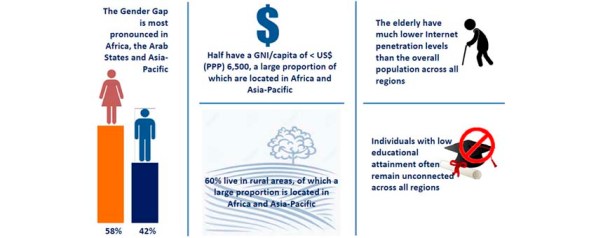By Fernando Menéndez, Public Policy Manager, Telefónica
This piece was republished from Telefonica’s Public Policy blog – the original article can be found here.
The ITU (International Telecommunications Union) has recently published a relevant paper named “Connecting the unconnected” to highlight the increasing importance of Internet access and the improvements that need to be done to unleash all its benefits for everyone. This research is aligned with Telefónica’s objective to bring the best connectivity to all our society without leaving anyone behind.
As we all know, the Internet has brought the most powerful transformational platform on earth, benefiting millions of people in the education, healthcare, agriculture, financial services, entertainment and employment sectors, amongst others. However, 53% of the world is offline due to several economic and social barriers that can be tackled through the involvement of private companies and public authorities.
This paper states that the majority of the unconnected are located in Africa and Asia-Pacific and are disproportionately female (58% out of the 3.9 billion), 60% live in rural areas, they are poor, illiterate and also elderly.

As the paper says, most studies conclude that while infrastructure gaps are still a key reason for being offline, it is the demand-side barriers including the lack of capability (basic literacy and ICT skills and know-how), relevance (a significant number of individuals that do not connect because they do not perceive a benefit) and also affordability (57% of world population currently cannot afford the Internet).

ITU within its Connect 2020 Agenda, has made it a goal to bring 60% of the world’s population online by 2020. “The key challenges in meeting Connect 2020 Agenda Targets are finding solutions to connect the large rural offline populations at minimal costs and finding effective strategies for narrowing the usage gaps across all regions. This also includes people from more urban areas or areas that are already within reach of infrastructure and people that are not among the very poor.” highlights the report.
You may read the full report here.
This piece was republished from Telefonica’s Public Policy blog – the original article can be found here.









